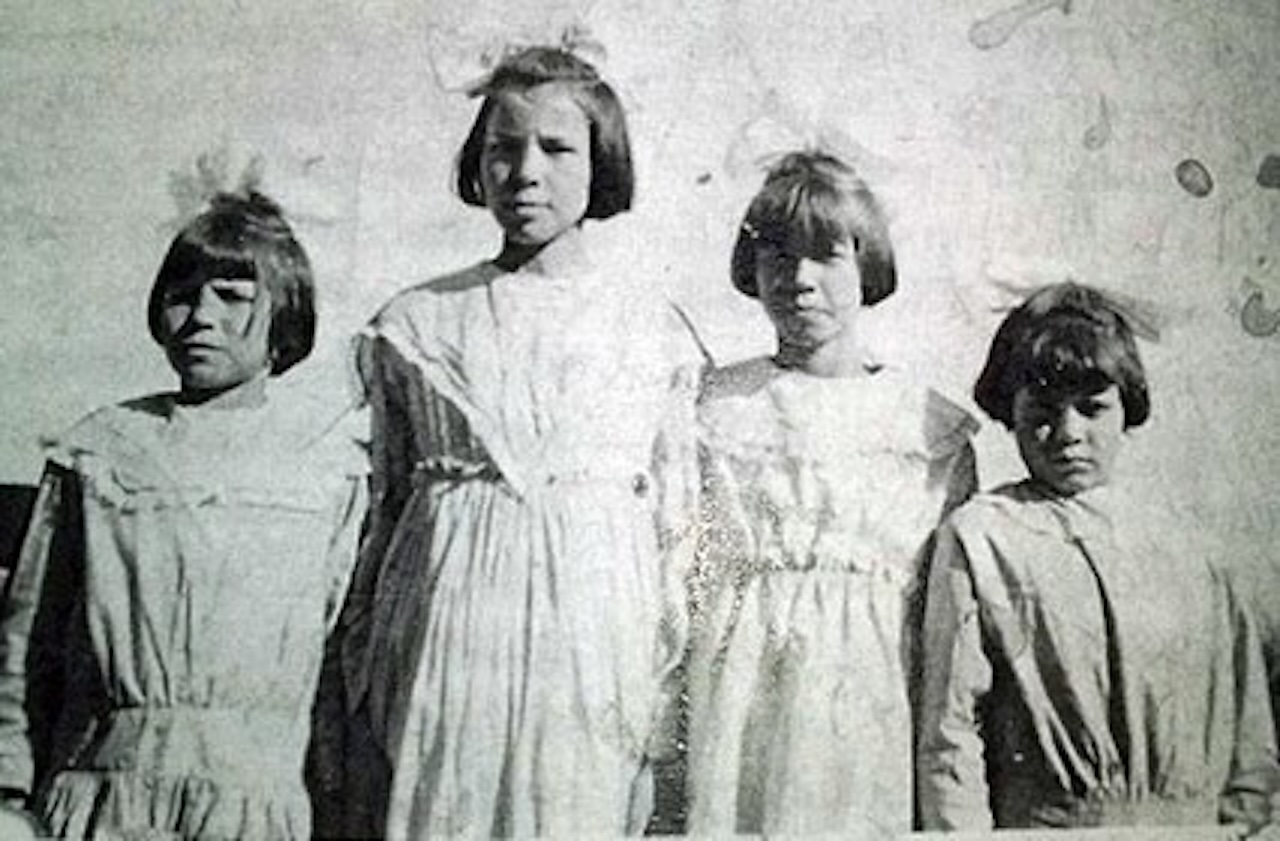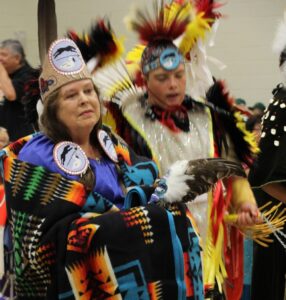Main Street News

Marist Professor Babette Fasolino Represents Eastern Shawnee Tribe in the Native American Journalists Association
The New York, Connecticut, and Massachusetts region has an abundant Indigenous history. This November, we’re celebrating Native American History Month with a series of features centered around Native American tribes and their people.
“My purpose for joining this group is two-fold,” Babette Fasolino said of joining the Native American Journalists Association (NAJA). “One, I’ve always been passionate about journalism, and I like this association because their focus is to give a voice to Native American issues. Two, is to try and encourage Native American college students to pursue careers in journalism. We need more people in journalism to begin with, but we need more diverse voices as well.”
Native American Journalists Association
NAJA works to empower Native journalists through programs and events that are designed to enrich journalism and promote Native culture.
Per their website, NAJA “recognizes Native Americans as distinct peoples based on tradition and culture. In this spirit, NAJA educates and unifies its membership through journalism programs that promote diversity and defends challenges to free press, speech, and expression. NAJA is committed to increasing the representation of Native journalists in mainstream media. NAJA encourages both mainstream and tribal media to attain the highest standards of professionalism, ethics, and responsibility.”
 Babette has had vast experience in the journalism field. She worked for Gannett newspapers for 14 years and then freelanced for publications such as The Poughkeepsie Journal, Taconic Newspapers, and Ulster Publishing.
Babette has had vast experience in the journalism field. She worked for Gannett newspapers for 14 years and then freelanced for publications such as The Poughkeepsie Journal, Taconic Newspapers, and Ulster Publishing.
Now, she works at Marist College as a Professional Lecturer of Public Relations and also serves as the Internship Coordinator for the School of Communications and the Arts.
With the chaos of the semester, Babette hasn’t gotten the chance to be involved with NAJA just yet, however, she hopes to change that soon. The organization is hosting a conference in July in Oklahoma and Babette is hoping to attend so that she can propose her presentation about why it’s so important to encourage young people of all ethnicities, but particularly Native Americans, to become journalists.
“I’d like to work on developing programs that encourage participation in the career field and also raise awareness of not only Native American issues, but a lot of cultural issues that we have in the United States,” she said. “The problems that we have, such as access to education, drug and alcohol abuse, generational poverty, and mental health issues, aren’t just relegated to Native Americans, but they do see a higher rate of it in many instances. We’d like to change that.”
The Eastern Shawnee of Oklahoma
Babette’s tribe, the Eastern Shawnee of Oklahoma, is a very small tribe that was originally settled mostly in Ohio.
“Like many Native American tribes, they were pushed out of their homelands and into desolate areas by the U.S. government in the 1800s,” she said.
Due to illness and conflict, the tribe dwindled down to just 69 members by the 1870s. Now, however, the enrollment numbers are around 3,000, and Babette said that all of the current members can trace their lineage back to a handful of men who survived during the 1800s.
“We’re all very closely related,” she laughed.
Babette’s mother was from Oklahoma, but she moved off of a farm and to Los Angeles with her husband and raised Babette in southern California. She remembers visiting Oklahoma as a kid, but she didn’t truly become involved until after her parents retired back to the reservation in Oklahoma.
Babette would bring her children down to the reservation to visit her mother and said that the tribal culture was much more a part of her children’s lives than it was hers while she was growing up.
In her family’s case, many of the people who survived from her lineage ended up leaving the reservation and moving away. In the case of her grandparents and great grandparents, they were removed from their land as children and taken to live at Indian Boarding schools.
“It’s so tragic that they were, in government terms, ‘cleansed’ of their Native American qualities and forcefully Americanized,” she said. “They lost their language and their culture, and as they grew older, a lot of them chose to leave the reservations in search of more opportunities.”

Babette’s Aunt Glenna, Eastern Shawnee Tribe Chief
Flipping the coin
Babette said the tribes that were able to do well for themselves are the ones who were given casino licenses. For the Eastern Shawnee, their casino license completely changed the trajectory of health and education within the tribe.
The Eastern Shawnee built an 85 million dollar casino that they recently expanded. Glenna J. Wallace, the tribe’s chief and Babette’s Aunt, wanted to ensure that the income from the casino was used for positive changes within the community.
“Glenna is a retired school dean, so she understood at an early age that the pathway to success is through education. One of the ideologies that she’s pushed is that the profits from the casino will be used for health and education funding.”
On many reservations, the tribe will give each member a portion of money each year, but Glenna wanted to ensure that the profits were going towards something that would truly benefit the tribal members. As such, a portion of the casino profits pay for healthcare and education for each tribe member every year.
“If you have young children, they’ll pay for the school clothes. When my children were in high school, they would pay for the SAT exam fees, prom tickets, and little things that the average person takes for granted. And they do this for tribal members whether they’re living on the reservation or not,” she said.
Babette explained that one of their main focuses is encouraging teens to attend college and they do so by offering to pay a large chunk of tuition for tribal members. When her children attended college, they received $10,000 per year, which was instrumental in allowing them to achieve an education.
“I would not be sitting in this chair if it weren’t for them,” Babette said of her tribe. “They helped me attend Marist for my Master’s degree, and the same month that I graduated, I started teaching here as well. None of that would’ve happened without the tribe.”
She noted that because she was a recipient of such a meaningful gift, she feels a duty to pay it forward.
“I’m a first generation college student, and that isn’t unusual for Native Americans. Unfortunately, it’s the exception rather than the norm,” she said. “I travel to different conferences trying to convince younger people that the pathway to improving their life is getting an education.”
One of the other things they did with the casino profits is build senior housing on the reservation to support the aging community. They provide food to the elders on a daily basis and even have a dining hall where members can eat together if they so wish. They also have their own health center so tribe members don’t have to travel to a doctor’s office or hospital.
“They have done so much with the casino funds that really improve people’s lives. It basically starts when you’re a baby and follows you throughout your life, and that’s amazing.”
Moving forward
Babette said that while she happened to fall upon NAJA, she is looking forward to utilizing the association as an opportunity to do some research with and about her tribe.
“I’ll be working with my Aunt Glenna, and she’s so helpful with the historical element. It’s hard living so far away, but it’s amazing that the tribe supports so many of the projects that its members are working on. I feel very grateful to be representing my tribe within this association.”
To learn more about the Native American Journalists Association, visit their website here. To learn more about the Eastern Shawnee Tribe of Oklahoma, visit their website here.


